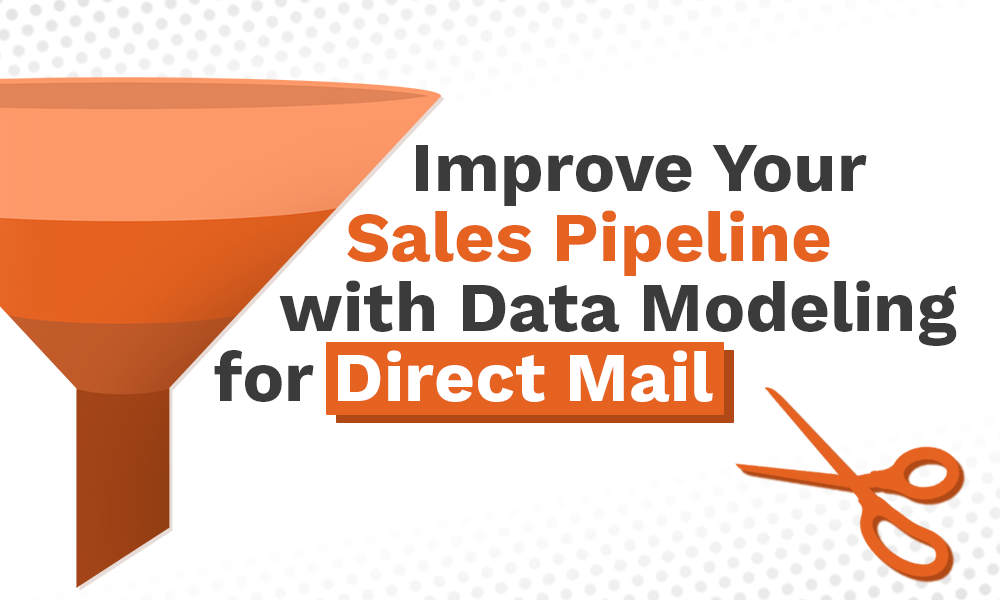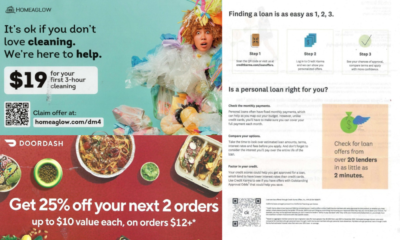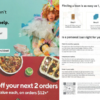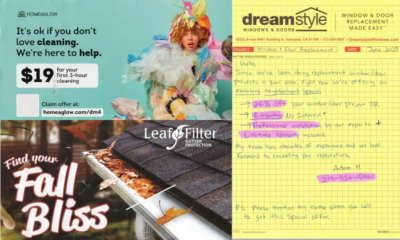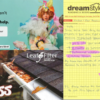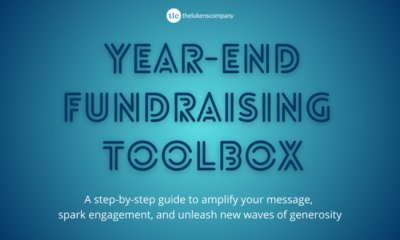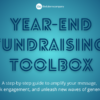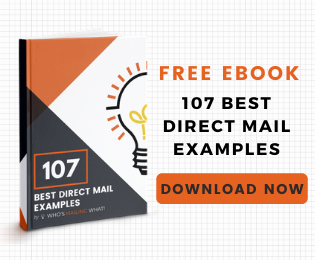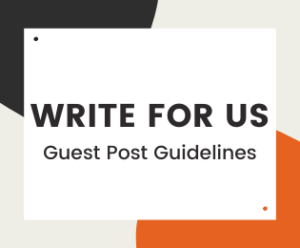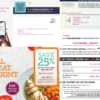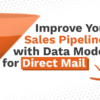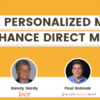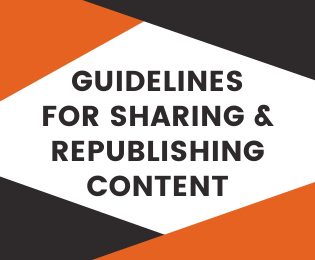INDUSTRY INSIGHTS
Improve Your Sales Pipeline with Data Modeling for Direct Mail
In this article, we talk about the effectiveness of data modeling in optimizing lead generation and maximizing ROI.
Profitable lead generation through an efficient customer pipeline is the primary goal for every sales team throughout the industry. Questions such as “How do we connect with our primary audience?” and “How do we get more conversions without going over budget?” are hot topic questions that keep many sales and marketing managers up at night.
AI and digital marketing are some modern attempts at low-cost, large-scale prospecting; however, these methods do not always yield the ideal leads that companies aim for. Despite the broad outreach that digital marketing provides through email, display ads, and social media, many irrelevant users are still accidentally consolidated into the sales process.
These broad campaigns are also prevalent in the direct mail industry. With less than stellar audience targeting, many mailers are thrown away or generate ill-fitting prospects – costing a company more time and money to filter out.
While some companies may view this as “a part of doing business,” an inability to filter out poor prospects reduces profitability and can make viable marketing strategies appear unprofitable.
Many companies are too preoccupied with the marketing message of a campaign. But often, it is a distinct failure of a company’s campaign targeting that causes too much “clutter” in their customer journey. The strongest message will fall on deaf ears if the wrong audience is exposed to it.
One of the best methods to highlight this lack of audience targeting is with the sales funnel. Through this illustration, one can understand the importance of audience targeting on ROI and the best strategy to optimize a company campaign.
What Is a Sales Funnel?
The sales funnel is a business concept that demonstrates the customer journey from marketing audience to customer. The funnel shows how different audiences are filtered out along the pipeline until all that remains are those that generate sales.
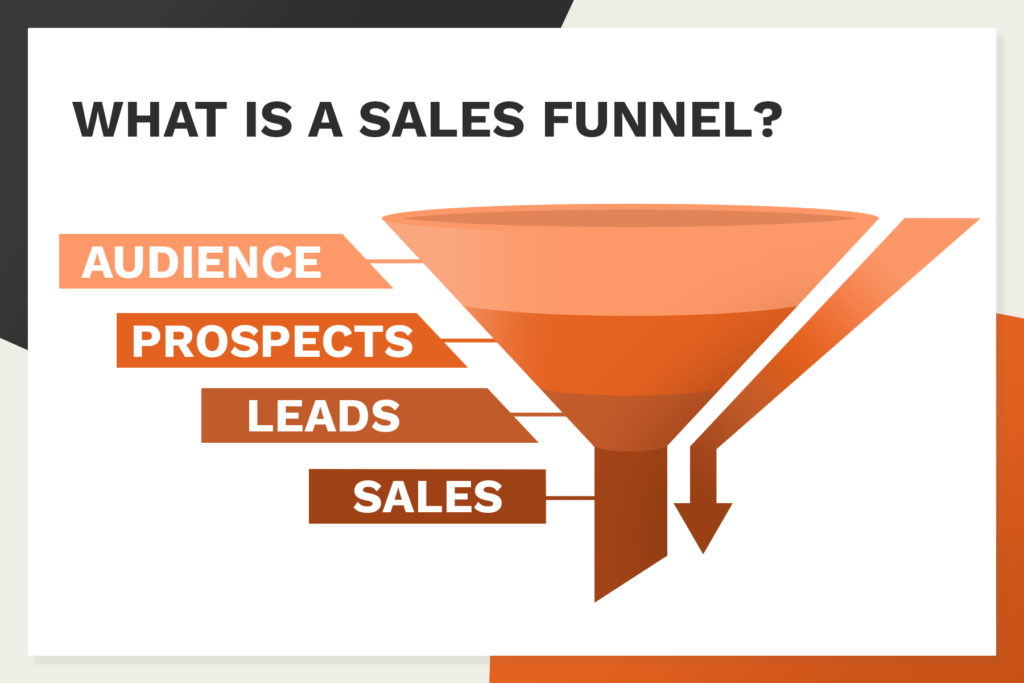
The top of the funnel labeled AUDIENCE is the beginning of this sales journey when a company begins planning a marketing campaign. This makes up the entire universe of potential targets that a campaign will reach during its lifespan.
Individuals within the audience who have similar behavior, buying patterns, and demographics as the company’s typical buyer become PROSPECTS. These are the individuals who best match a company’s current client base and are the most likely to become a customer.
Prospects that initiate their interest in the advertised products or services become LEADS. Leads can signal their interest, for example, by calling the business, filling out a contact form, or visiting the company website through a QR code.
And finally, leads who purchase a product or service become customers that generate SALES. Once a lead becomes a customer, they have completed the customer journey.
Types of Sales Funnels
The sales pipeline is often varied across individual companies due to how each business conducts its sales process and marketing strategy. For simplicity’s sake, these funnels will cover basic concepts and general terms that most companies implement into their sales pipeline:
1. The Traditional Sales Funnel
The traditional sales funnel is the main example most companies use when illustrating the customer journey.
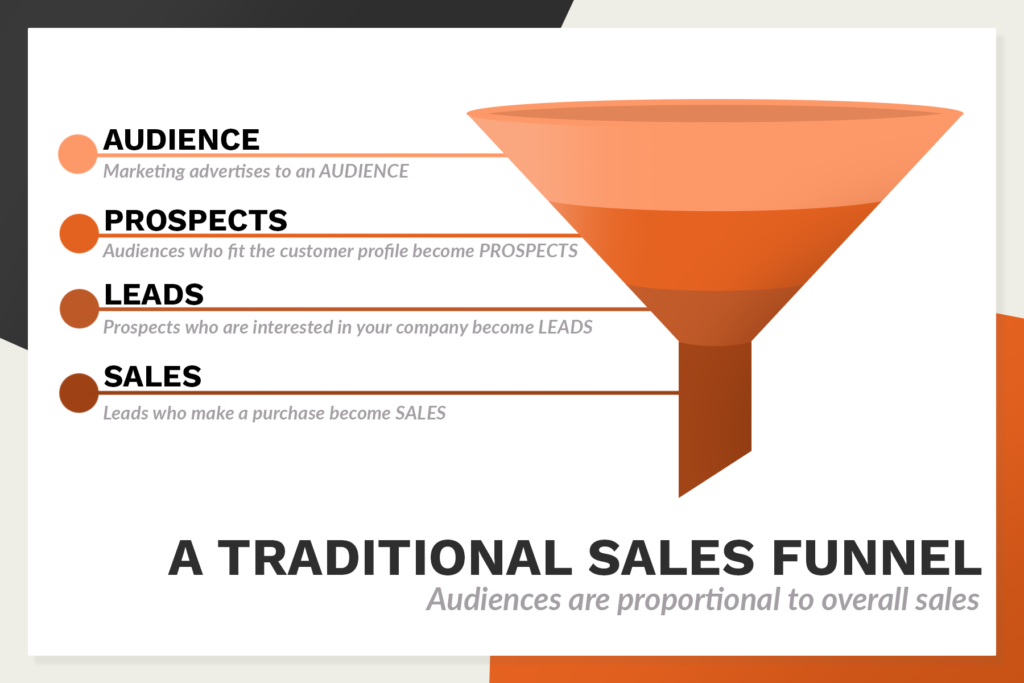
In this funnel, the audience size is directly proportional to overall sales. Audiences in this sales funnel are often targeted based on location, such as the local town or zip code.
For example, a pizzeria may utilize the traditional sales funnel when delivering marketing mailers to the surrounding neighborhoods. The restaurant’s “audience” would be residents who live close enough to visit the location, while its “prospects” would be those within that area who enjoy pizza.
A prospect would become a “lead” once they go online to learn more or when they make a reservation at the restaurant. Finally, these leads generate a sale when they pay for their dinner.
While this type of sales funnel is widely used, it is very inefficient – mainly due to the exorbitant costs to conduct this type of campaign. Unless a business sells something universally enjoyed (like pizza), it is far more effective to use a better-defined audience targeting strategy to maximize ROI.
2. The “Top Heavy” Sales Funnel
Some campaigns have a broader audience reach, such as the “Top Heavy” sales funnel. This strategy is known to have a much, much larger audience reach, but this does not always reflect in more sales.
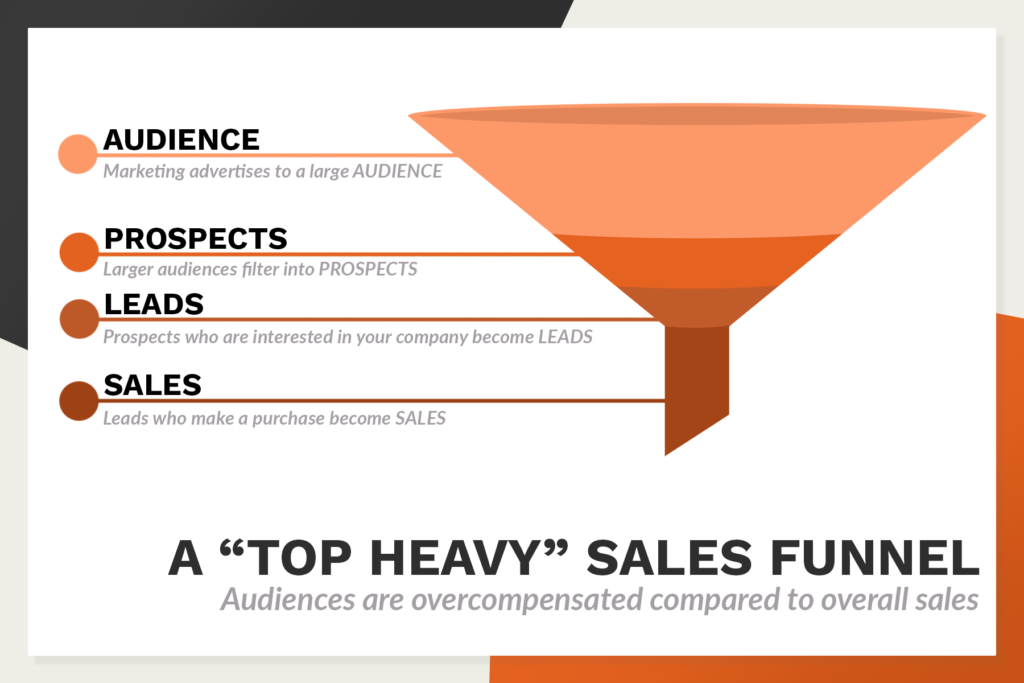
Superbowl commercials, for example, have a large audience reach, as an estimated 123.7 million viewers mean many eyes at once on your brand. But not everyone who watches a Superbowl ad will buy the newest BMW on their next shopping trip.
Mail campaigns can implement this strategy as well, to a lesser extent. If there is a city-wide event, for example, it may be beneficial to have a larger audience reach. However, few companies outside of nationwide corporations have the funds to implement such a large-scale blanket direct mail campaign.
Because a lot of time and money is spent on reaching a larger audience, this marketing strategy works best for brand awareness rather than lead generation. Since the goal is greater reach, this strategy creates a lot of clutter at the top of the funnel – resulting in poor conversion rates.
3. The Targeted Sales Funnel
A targeted sales funnel is intrinsically different, as it has a much smaller audience than the previous two sales funnels.
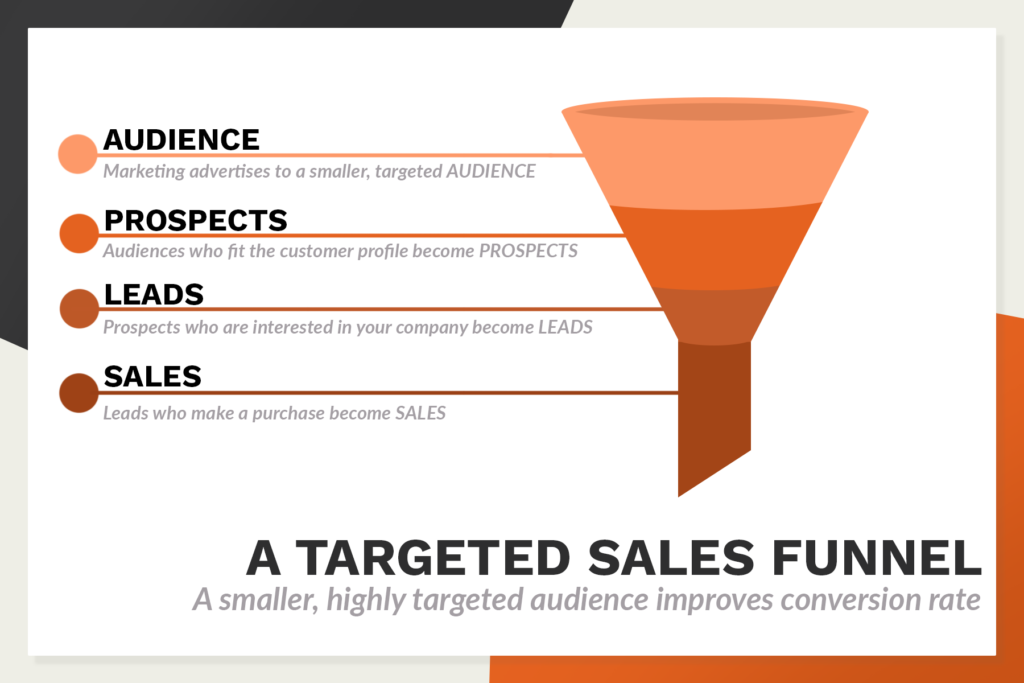
Campaigns that use this sales pipeline create a heavy emphasis on audience targeting. This can include targeting by location and demographics, such as age, gender, and estimated income.
By using a more refined approach, these companies can avoid a lot of needless spending on large segments of the audience that are not actually prospects. Examples of this sales pipeline include marketing to over-55 residential communities for hearing aids or targeting high-earning homeowners for landscaping services.
While not every recipient will become a customer, they are much more likely to convert based on the demographics they share with current customers – saving money through efficient audience targeting.
But simple demographics certainly do not tell the entire story. This is why many marketers take it a step further and study both the customer and their unique preferences to determine ideal prospects – a strategy known as data modeling.
What Is Data Modeling?
As defined, data modeling is a marketing strategy that utilizes specific data points and characteristics to predict future trends and find ideal prospects. This tactic is often implemented by creating a customer profile based on current consumer preferences, demographics, and buying habits to identify future prospects.
Thousands of individual data points, characteristics, and behaviors determine which households would make a viable lead and which would not. A marketer must observe these trends in their current customer base and choose which characteristics to study for their outreach strategy.
That is one reason why it is wise for companies to invest in data modeling as an integral part of their marketing strategy. In doing so, these campaigns can seek out only prospects instead of seeking prospects within a larger audience.
What Does a Data Modeling Funnel Look Like?
Since data modeling focuses on ONLY prospects, the top audience section of the sales funnel is made redundant.
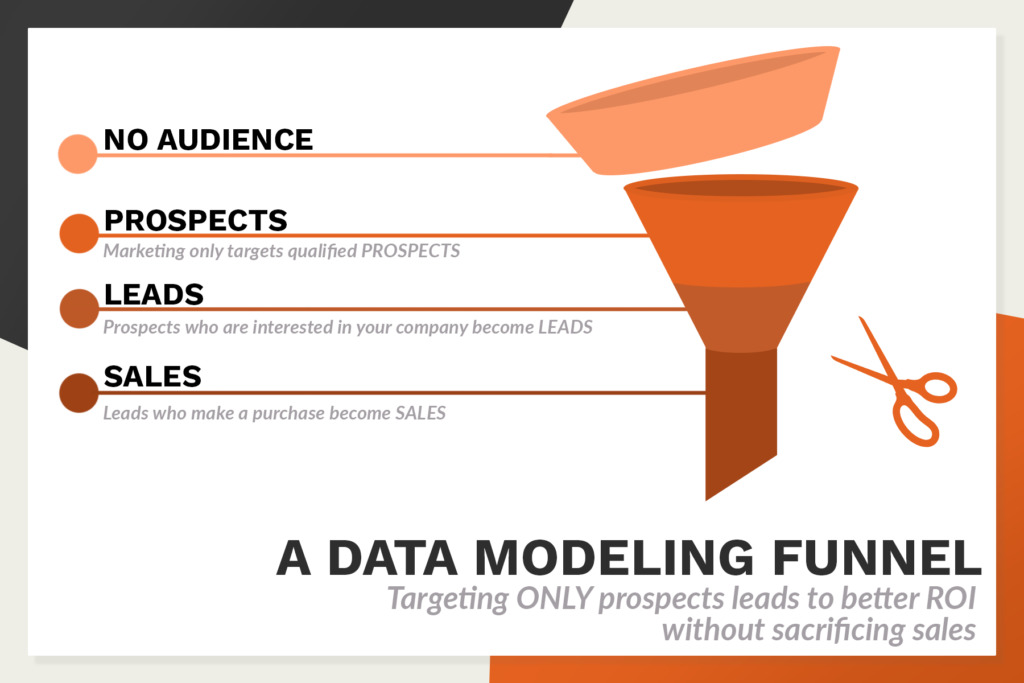
Because data modeling removes many addresses that are not from ideal prospects, campaigns can reduce mail volume significantly by avoiding households that would otherwise discard an advertising mailer.
With this intentional and specific audience targeting, campaigns will reach only the most qualified prospects. This strategy helps to reduce needless spending and simultaneously improve ROI.
Campaigns utilizing data modeling will often have a smaller audience (of prospects) compared to the three previous funnels. However, these prospects are much more likely to convert due to their similarities that mirror current customers. Therefore, these campaigns have a better opportunity to convert at a higher rate, even when targeting fewer households.
Data Modeling and the Sales Funnel
When a company’s advertising prioritizes audience reach over audience targeting, a number of people will see the ad but never generate a sale. Even targeting through demographics may not be enough to break even on a direct mail campaign.
Not only does the data modeling strategy “trim the fat,” so to speak, but it also increases ROI by improving the response rate and quality.
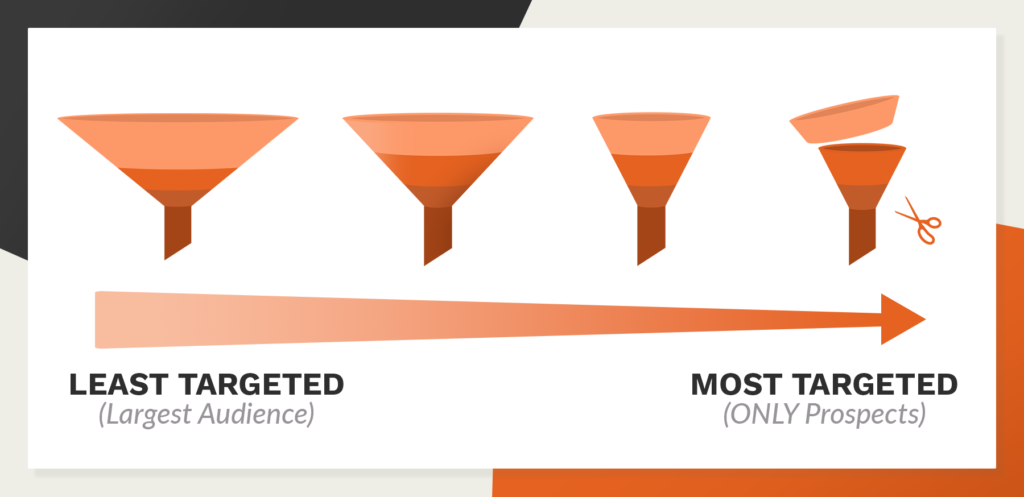
Whereas other sales funnels are the equivalent of targeting an entire haystack (audience) to find a few needles (prospects), data modeling has already identified its ideal prospects to target. In turn, this allows companies to prioritize premium customers, as every targeted household is likely to share similar characteristics and behaviors as previous customers.
A more targeted approach can see tremendous success, especially for smaller companies in a highly competitive market. By seeking out audiences that would best resonate with a company’s message, marketers can still generate profitable leads even on a limited budget.
 Written by Jocelyn Ouellette
Written by Jocelyn Ouellette
Jocelyn Ouellette is a Marketing Specialist at DK Solutions, an Inc 5000 award-winning direct mail marketing firm based in Florida and NJ. DK Solutions specializes in data modeling for lead generation using its proprietary TargetList methodology to identify ideal prospects for their clients.
You can connect with Jocelyn at dksmo.com or email at jocelyn@dksmo.com







